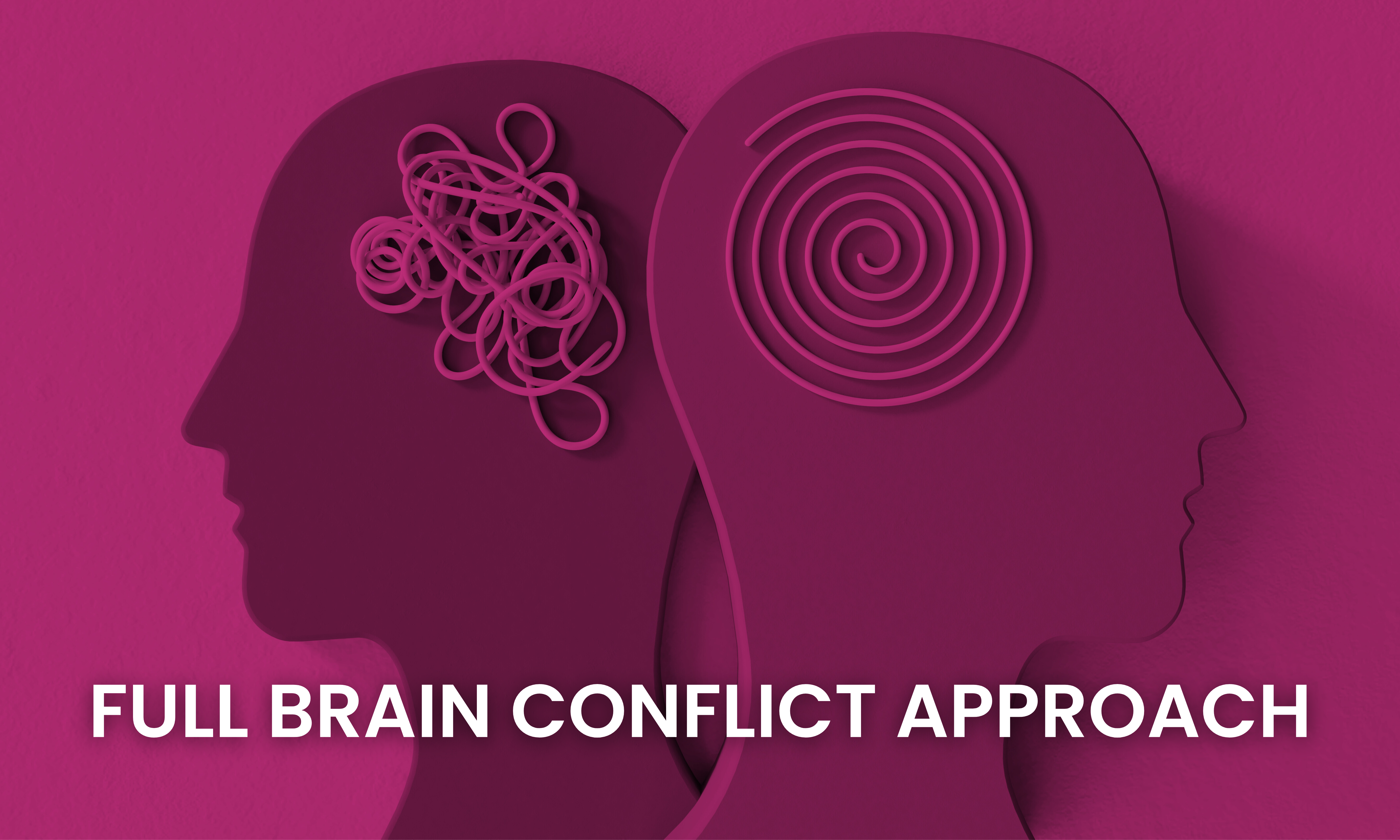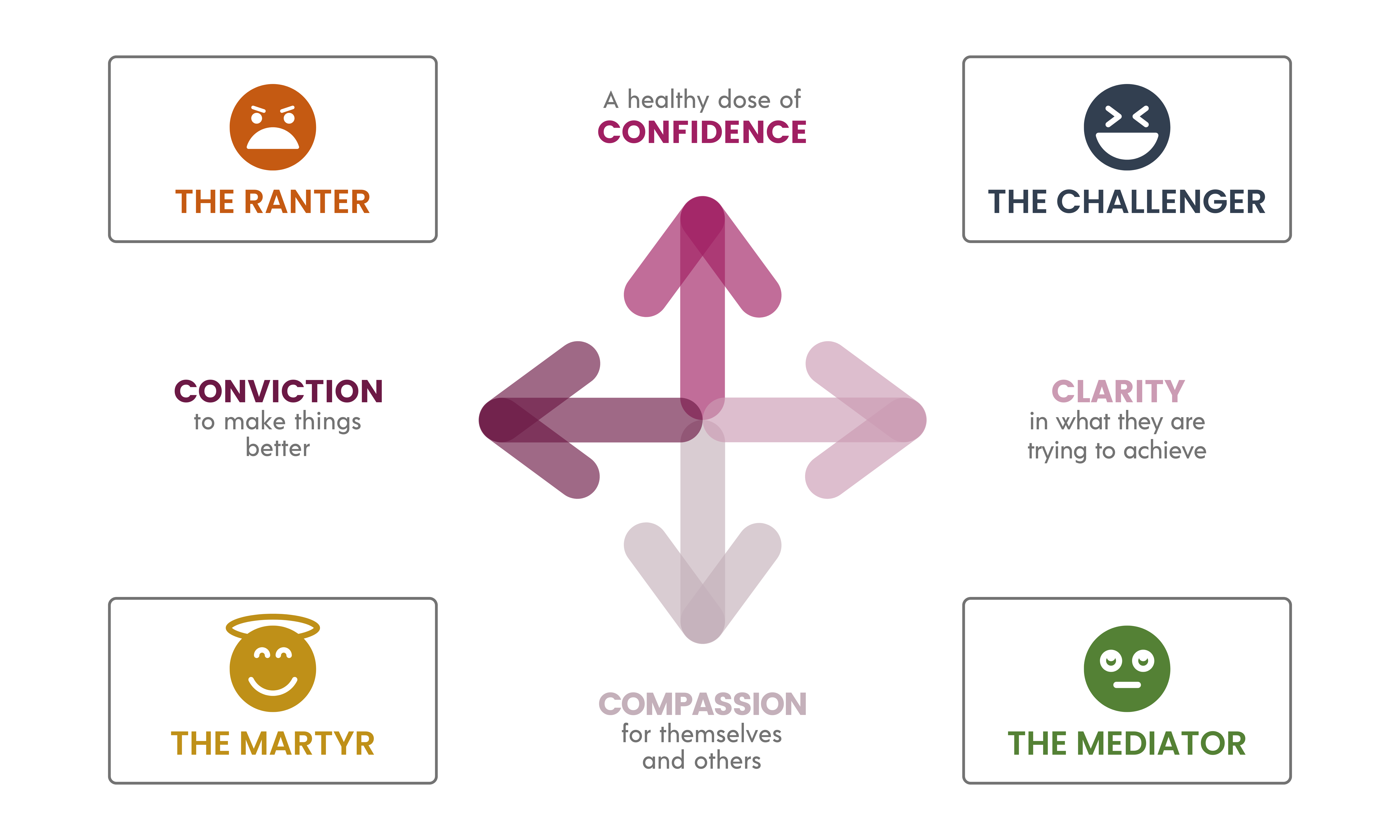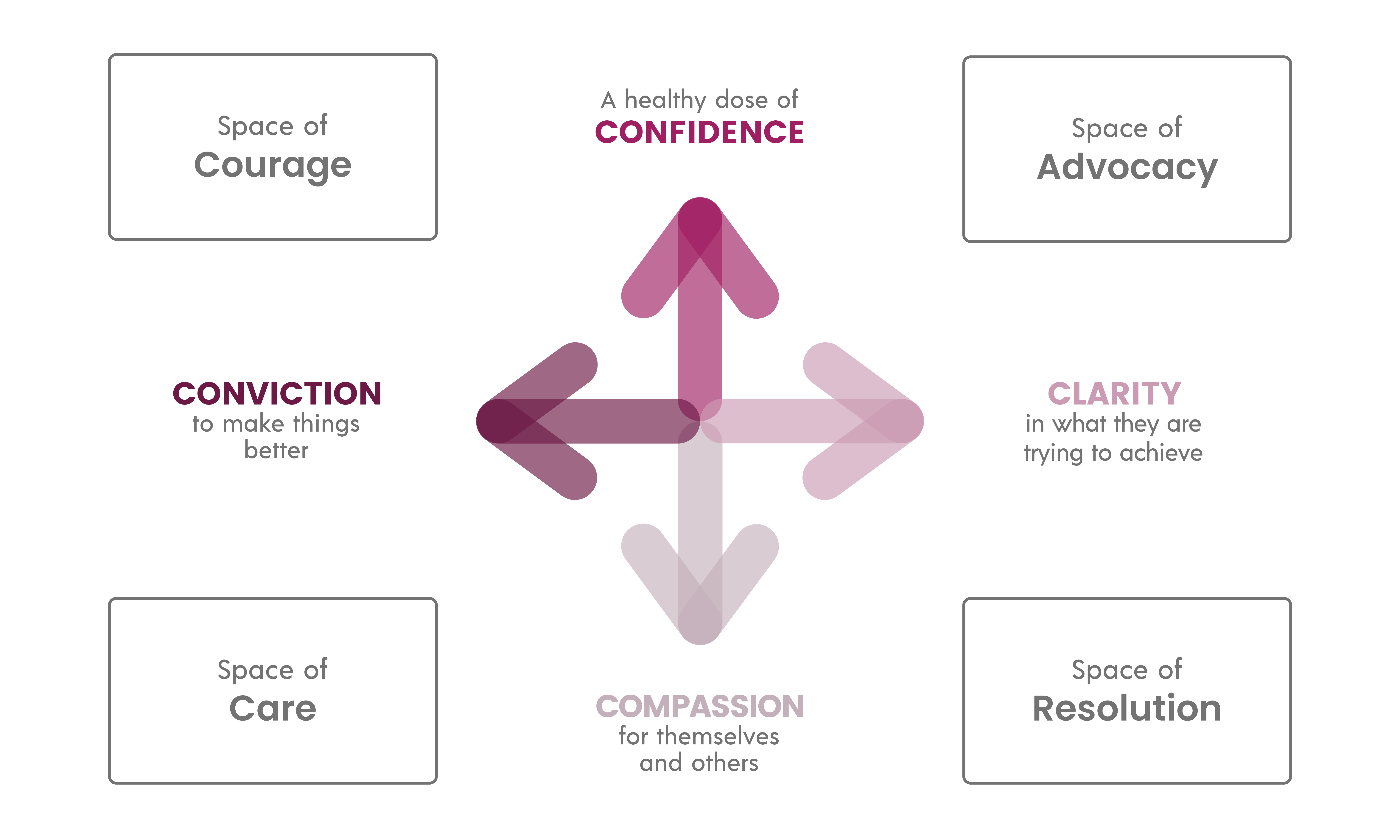
Conflict, an uncomfortable tension arising when our worlds collide with others, is a valuable resource that can lead to greater exploration, richer problem solving, and better results. However, when managed poorly, conflict has the potential to drain the life out of an organization, team, or relationship. Our brains, designed for survival, tend to revert to primal instincts during periods of stress, making it difficult to handle conflict effectively. At our best, we can step back, see a situation clearly, and respond appropriately.
Over the past 15 years, in working with over 5000 leaders, we have found that productive conflict requires accessing the full capacity of the brain to engage in meaningful conversations and achieve better outcomes. This “full brain” approach involves navigating four distinct spaces: clarity about desired outcomes, the conviction to seek improvement, the confidence to share perspectives openly, and the compassion to understand others’ viewpoints and adjust accordingly. These spaces are:
- Space of Advocacy: Asserting your own ideas and what you would like to see changed
- Space of Courage: Speaking up about what isn’t working and its impact
- Space of Care: Actively listening to the other side and being open to their views
- Space of Resolution: Seeking a path forward and being open to solutions
CLICK IMAGES TO SEE LARGER VERSIONS
When we are at our best, we can access all four spaces. However, under stress, we tend to dominate one space, leading to different survival styles:
- The Challenger: Stuck in the Space of Advocacy, constantly pushing for change and new ideas. If overused, this type is seen as confrontational.
- The Ranter: Stuck in the Space of Courage, focused on what isn’t working and past hurts. If overused, this type is perceived as negative and fixated on the past.
- The Martyr: Stuck in the Space of Care, advocating for others’ needs over their own. If overused, this type is seen as overly empathetic or a “bleeding heart.”
- The Mediator: Stuck in the Space of Resolution, quickly smoothing over conflicts to avoid discomfort. Overused, this type is seen as avoiding conflict rather than addressing it.
To achieve the full brain approach and avoid these survival styles, we recommend the CALM Method, which helps to navigate the four spaces of conflict without triggering fight-or-flight responses:
- Clarify the Issue: Clearly identify your goals for the conversation. This involves determining whether you seek to preserve the relationship, achieve a specific result, or uphold your values. For example, when someone is stuck in a rant, ask, “What do you want from this conversation? Do you want me to just listen or share my thoughts?” This helps shift the person into a more reflective space
- Address the Problem: Identify what can and cannot be resolved. Every conflict involves “your crap, my crap, and our crap,” and we can only deal with “our crap” collectively. Courageously share your feelings and vulnerabilities, showing how the situation impacts you
- Listen to the Other Side: This step, particularly challenging for natural Challengers, involves entering the Space of Care and Compassion. Rather than viewing those who advocate different perspectives as adversaries, approach them with curiosity. Listening doesn’t mean conceding but understanding their viewpoint
- Manage the Way Forward: Outline the path forward, which could involve compromise, agreeing to disagree, or discovering a new resolution that neither party had initially considered
Conflict is challenging but essential for leaders to manage, as a certain level of conflict is necessary for achieving optimal performance and results. The good news is that the skills for managing conflict can be taught and learned. By employing the CALM Method and accessing the full brain approach, leaders can transform conflict into a powerful tool for growth and improvement.
Presented by

Archives
Categories
- Attraction and Recruitment
- Benefits
- Celebrating Success and Recognition
- Change Management
- Coaching and Conflict Resolution
- Culture
- Diversity, Equity and Inclusion
- Emotional Intelligence
- Employee Engagement
- Employee Performance
- Labour Disruption
- Leadership
- Mentoring
- OMHRA activities
- OMHRA Events
- Psychological health and safety of the HR professional
- Recruitment
- Recruitment and Retention
- Retention
- Uncategorized
- Unique ideas for recruiting in a tight job market
- Wellness
Recent Posts
- Alleviate the Stress of Conducting a Workplace Conflict Investigation
- Bridging Differences: 5 Techniques for Building Conflict Competence
- Full Brain Conflict Approach
- Finding Meaningful Modified Work through Understanding Job Demands
- From Office Spats to Success Stories: How HR Can Create Growth Out of Conflict



